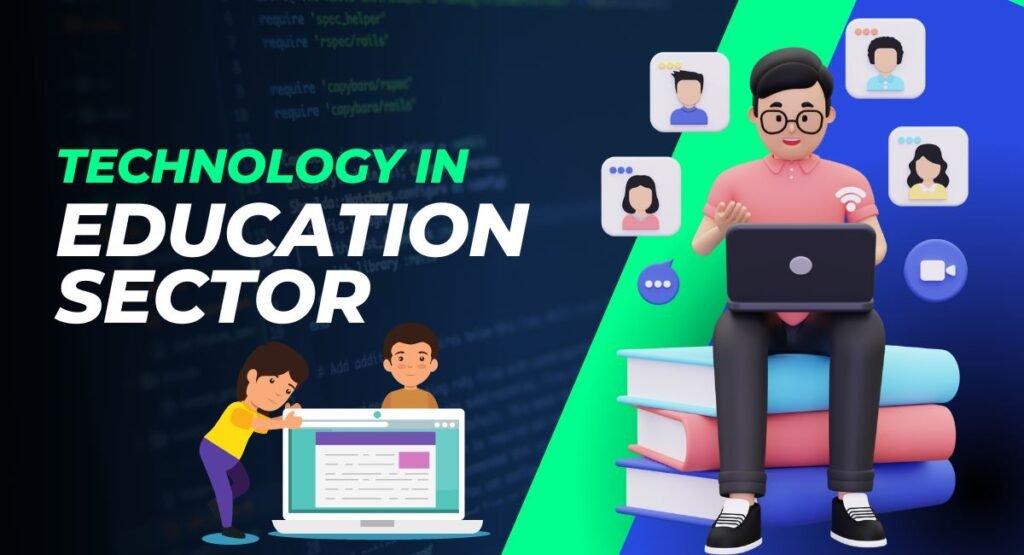In recent years, technology has played a bigger part in the educational sector. Technology is now even more essential to ensure that students may continue to learn remotely because of the ongoing COVID-19 epidemic. Remote learning is just one aspect of how technology is affecting education, though. Technology has transformed education, making it more participatory, interesting, and accessible for both students and instructors.
In this article, we’ll look at the top five ways that technology has changed the field of education and talk about how it’s given both students and instructors new opportunities.
Enhanced Learning Experience
Technology has been more prevalent in the educational field recently. Because of the ongoing COVID-19 outbreak, technology is now especially crucial to guarantee that students can continue to learn online. Yet there are other ways that technology is influencing education besides remote learning. Education has changed as a result of technology, becoming more interactive, engaging, and approachable for both learners and instructors.
With the use of technology, education for students has significantly improved, becoming more participatory and engaging. For example, students may enroll in a number of courses from major institutions on online learning platforms like Coursera and edX anywhere on the globe.
These courses provide students the flexibility to learn at their own speed by including interactive video lectures, exams, and homework. Comparably, interactive elements in digital textbooks, like those provided by Pearson and McGraw Hill, such as animations, videos, and quizzes, make it easier for students to comprehend challenging ideas.
In addition, augmented and virtual reality technologies provide students with immersive learning opportunities that make exploring and learning more interesting and participatory.
Increased Access to Education
Access to education is one of the major benefits of technology in education. Students can access instructional resources using e-learning platforms from any location in the world. This implies that students who reside in remote places or who, for personal reasons, are unable to attend regular classes, can nevertheless have access to high-quality education.
Technology has also reduced the cost of education since e-learning courses are frequently less expensive than conventional classroom-based courses.
For example, anybody with an internet connection may attend online classes that are free or inexpensive through Massive Open Online Courses (MOOCs). Sites like Khan Academy and Udemy provide free classes in a range of areas, opening up knowledge to those who would not have previously had access to it.
Personalized Learning
Students can now receive tailored learning experiences thanks to technology. Learning analytics allow teachers to monitor students’ development and provide them with tailored feedback. The learning rate and material may also be modified using adaptive learning technology in accordance with the strengths and limitations of the pupils. This makes sure that every kid has the assistance and attention they require to achieve.
For example, the learning management system may monitor students’ progress and provide tailored assistance and feedback based on specific requirements. A student’s talents and progress are taken into account by algorithms used by adaptive learning platforms like DreamBox and Knewton to modify the pace and complexity of the learning materials.
This enables them to study at their own rate and ability, which may increase interest and memory retention. In addition, gamification strategies like leaderboards and badges can encourage students to study and track their achievements in a pleasant and interesting way. They all provide a more tailored learning environment that may assist students to achieve greater results.
Improved Collaboration

Students can now receive tailored learning experiences thanks to technology. Learning analytics allow teachers to monitor students’ development and provide them with tailored feedback. The learning rate and material may also be modified using adaptive learning technology in accordance with the strengths and limitations of the pupils. This makes sure that every kid has the assistance and attention they require to achieve.
For instance, students may work together in real-time on projects and tasks no matter where they are thanks to programmes like Google Docs and Microsoft Teams. This makes it easier for students to collaborate on group projects, exchange materials, and give each other feedback. Students may interact with professors and classmates via video conferencing applications like Zoom and Skype, which fosters a feeling of community and improves learning.
Social media sites like Instagram and Facebook may also be utilised to help students and instructors collaborate and communicate, creating a forum for conversations and idea exchange outside the classroom. These modern methods of collaboration in education are made feasible through a variety of tools and technology.
Better Assessment
Also, technology has enhanced communication between professors and pupils. Students from different locations can collaborate online on assignments and tasks thanks to these technologies. This enables people to exchange knowledge and learn from one another, thereby improving their learning results. Technological advances have additionally made it simpler for educators to work together, share instructional resources, and give feedback on students’ work.
Instantaneous grading of digital assessments, including online tests and quizzes, saves teachers’ time and gives students useful feedback. Moreover, by using multimedia components like movies and interactive simulations, digital exams may be created to evaluate a variety of abilities, particularly critical thinking and problem-solving.
For instance, in order to more accurately measure students’ problem-solving skills, the National Assessment of Educational Progress (NAEP) has started including interactive problems in its examinations. Moreover, online portfolios like Seesaw and Edufolios allow students to track their learning and development over time, giving teachers and administrators a more complete picture of their progress than traditional tests. These new methods of evaluating student learning and development provided by these tools and technology enable more precise and insightful evaluations.
Conclusion
In conclusion, technological advances have significantly impacted the educational field and helped to modernize and enhance the existing educational system. Technology has created new opportunities for students and instructors alike, from boosting cooperation and evaluation to enriching the learning experience. Yet it’s important to keep in mind that technology should not take the place of instructors; rather, it should be utilized as a tool to support their work. Hence, it is essential that educators embrace technology and make use of it in a way that complements rather than replaces their instruction.

